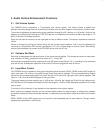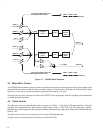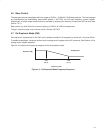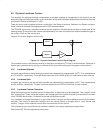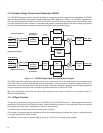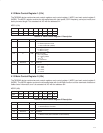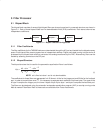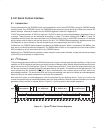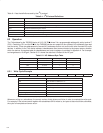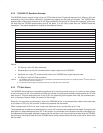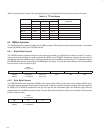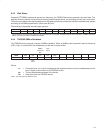
5−1
5 Filter Processor
5.1 Biquad Block
The biquad block consists of seven digital biquad filters per channel organized in a cascade structure, as shown in
Figure 5−1. Each of these biquad filters has five downloadable 24-bit (4.20) coefficients. Each stereo channel has
independent coefficients.
Biquad 1 ...Biquad 0 Biquad 6
Figure 5−1. Biquad Cascade Configuration
5.1.1 Filter Coefficients
The filter coefficients for the TAS3002 device are downloaded through the I
2
C port and loaded into the biquad memory
space. Each biquad filter memory space has an independent address. Digital audio data coming into the device is
processed by the biquad block and then converted into analog waveforms by the DAC. Alternatively, filters can be
loaded by asserting terminals on the GPI port.
5.1.2 Biquad Structure
The biquad structure that is used for the parametric equalization filters is as follows:
H(z) +
b
0
) b
1
z
*1
) b
2
z
*2
a
0
) a
1
z
*1
) a
2
z
*2
NOTE: a
0
is fixed at value 1 and is not downloadable.
The coefficients for these filters are represented in 4.20 format—4 bits for the integer part and 20 bits for the fractional
part. In order to transmit them over I
2
C, it is necessary to separate each coefficient into three bytes. The upper 4 bits
of byte 2 comprise the integer part; the lower 4 bytes of byte 2 plus byte 1 and byte 0 comprise the fractional part.
The filters can be designed using the automatic loudspeaker equalization program (ALE) or a script running under
MatLab named Filtermaker. Both of these tools are available from Texas Instruments.
(1)



